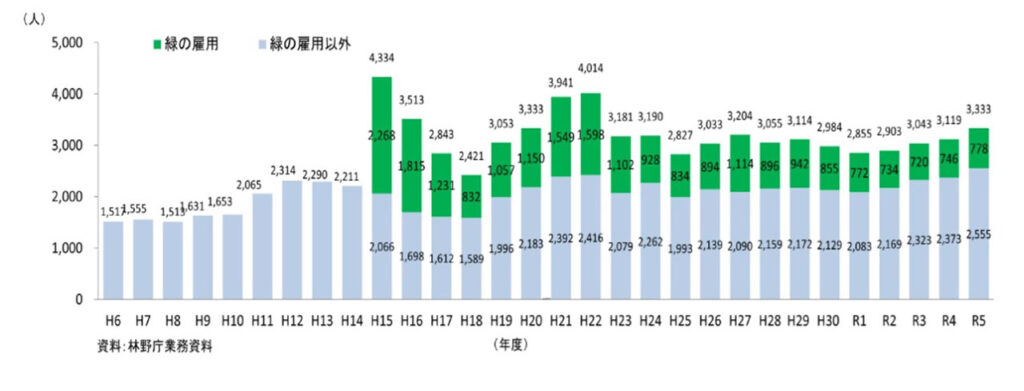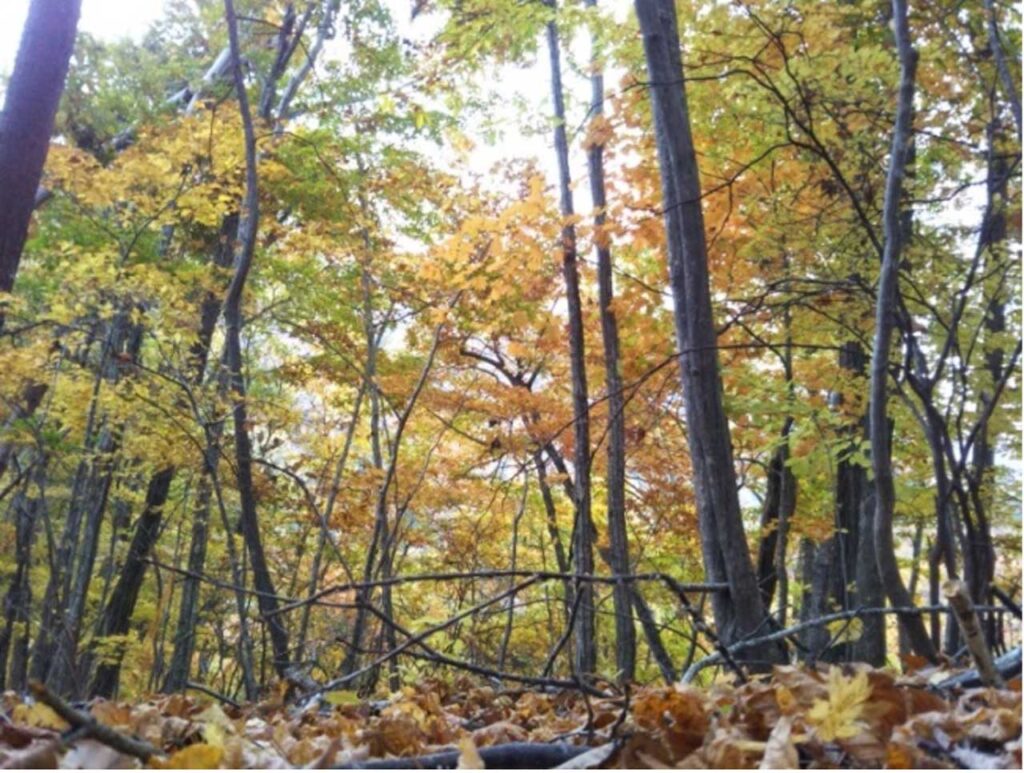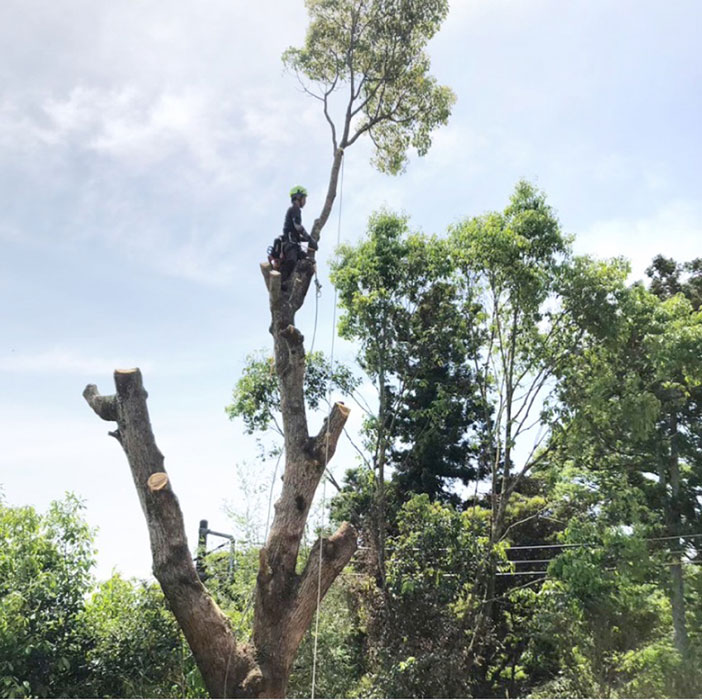Some young people are interested in forestry as a lifestyle option
Updated by Sogo Kato on July 15, 2025, 6:27 PM JST
Sougo KATO
Leaf Rain Co.
After working for a financial institution researching companies in the high-tech field, he worked as a supervisor at a landscape construction site before setting up his own business. He is interested in the materials industry, renewable energy, and wood utilization, and in recent years he has been writing about the forestry industry. With his experience of working in the forests in the past, he aims to write articles that explore the connection between the realities of the field and the industrial structure.
The forestry industry is undergoing a quiet change. While the forestry workforce is aging, and statistics from the Forestry Agency indicate that by 2020, 25% of the workforce will be over 65 years old, the number of new entrants, mainly young people, is slowly increasing. This is thought to be due to a change in values that seek a lifestyle that is closer to nature, and in particular, the recent visualization of the appeal of artisanal work through SNS and YouTube. Many young people are interested in forestry as a "lifestyle option," rather than simply a job.
Conventional forestry management has generally involved a division of labor structure, with the mountain owner outsourcing the logging and removal of trees to a forestry cooperative or company. For many years, a lack of labor and a low-profit structure have been issues, but recent years have seen partial improvements in an increasing number of areas thanks to the introduction of ICT such as drone surveying technology, advances in mechanization, and the expansion of subsidized systems such as the forest environment concession tax.
However, the challenges of cost structure and distribution remain deep-rooted, and the search for sustainability continues. In particular, domestic timber is overwhelmed by price competition from overseas timber, and there are persistent voices that it is difficult to secure profitability in the conventional forestry industry on its own.
The "Green Employment" project initiated by the Forestry Agency in 2003 has achieved some success in promoting new employment, especially among young people. However, the system that covers career support and life planning beyond that point varies widely from region to region and from entity to entity.

Working as an on-site logger also requires a high level of safety awareness as well as the acquisition of technical skills. Furthermore, in the unique working environment of mountain forests, the number of working days is often limited by bad weather and other factors, and until a certain level of skill is acquired, it is difficult to feel financially secure.
In fact, many say that even if they are initially attracted to living and working in the mountains, after a few years they begin to see concerns about the future. According to the Forestry Agency, the retention rate after 3 years is 70%, which is high compared to other industries, but after 10 years the rate is less than 50%. This suggests that it is difficult for people to continue working without support for long-term life planning, including family, income, health, and career options. Those involved in the forestry industry themselves must also be willing to continue learning and thinking about management, understanding of the system, and their relationship with the local community.
In most of Japan's forestry operations, the owner of a mountain outsources the forest to a company or forestry cooperative, and craftsmen cut the trees and remove them from the forest. However, in recent years, in addition to the conventional method, small-scale, independent forestry operations have begun as a third option. For example, there is a model of 6th industrialization of forestry in which individuals and small corporations engaged in self-supporting forestry sell firewood, lumber, and handicrafts at local roadside stations (e.g., Sakawa Town, Kochi Prefecture).
Unlike forest maintenance that focuses on coniferous trees, thinning of broadleaf trees (trees with broad, flat leaves belonging to angiosperms such as cherry, zelkova, and beech) and forestry with an awareness of landscape preservation are also attracting attention. Broadleaf trees can be easily processed into furniture, musical instruments, and other products to add value, and they are also attracting attention for their affinity with tourism, such as art (e.g., Iwaizumi Town, Iwate Prefecture).


Although there are high barriers to entry to monetize these efforts due to complex literacy in management and sales channels, as well as bottlenecks in securing manufacturing and sales personnel, this new model of forestry that does not rely on subsidies is likely to attract attention in the future.
Even in urban areas far from the mountains, there are sites where forestry techniques can be utilized. In narrow sites where cranes cannot be used, such as the felling of tall trees at shrines, parks, and university sites, special felling techniques using rope work are required. These sites are a treasure trove of giant trees such as ginkgo, camphor, and konara (Quercus serrata) with a trunk circumference of 200 cm and a height of 30 m. There is a lot of demand for felling due to the risk of trees crossing over onto neighboring land or falling.

In addition to skilled logging techniques, this field requires a high level of physical sensibility and judgment in using multiple ropes and working in mid-air. It is more specialized than general forestry work because of the complex factors involved, such as the skill to accurately pass a rope through a targeted branch, the number of tools, and safety during the work. This special logging often allows contractors to work at "fair price by special technique" if they have a certain level of skill and credibility.
Forestry is both a way of working and a way of life. Craftsmanship, management ideas, and connections with the local community will be in greater demand than ever before. And some of these efforts will spread to more forestry managers and craftsmen. The design of this work as a path that can be continued will determine the future of forests and people. (Sogo Kato, Forestry Writer, Leaf Rain Inc.)